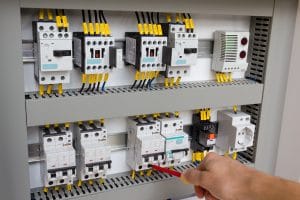 Efficiently transferring electrical waste heat is an essential benefit of modern heat exchangers. However, that benefit would be largely impossible if they couldn’t effectively meet the various NEMA standards that most electrical enclosures must meet these days. As industries continue to streamline productivity and safety, meeting these standards has become increasingly more important. Fortunately, today’s heat exchangers are designed specifically to maintain the integrity of different NEMA-class electrical enclosures. Using advanced heat transfer methods and high-quality seals and gaskets, heat exchangers can ensure a high level of safety under all types of operating conditions.
Efficiently transferring electrical waste heat is an essential benefit of modern heat exchangers. However, that benefit would be largely impossible if they couldn’t effectively meet the various NEMA standards that most electrical enclosures must meet these days. As industries continue to streamline productivity and safety, meeting these standards has become increasingly more important. Fortunately, today’s heat exchangers are designed specifically to maintain the integrity of different NEMA-class electrical enclosures. Using advanced heat transfer methods and high-quality seals and gaskets, heat exchangers can ensure a high level of safety under all types of operating conditions.
The Point of NEMA Standards
The standards for modern electrical enclosures that are set forth by the National Electrical Manufacturers Association (NEMA) are intended to optimize safety as well as system integrity. They generally focus on the level of protection each enclosure must provide against environmental hazards and personnel access to dangerous components. Besides the enclosures themselves, the thermal management systems used to cool them must also meet these requirements. This makes the high level of protection and efficiency of modern heat exchangers even more beneficial for a variety of industrial applications.
Heat Exchangers for All Enclosures
In the past, thermal management was one of the most vulnerable areas in terms of enclosure protection. For example, air conditioners can offer a high level of protection, but they can also generate condensation within the enclosure that could lead to damaged or malfunctioning equipment. By contrast, heat exchangers can simultaneously provide more reliable and effective thermal management while easily maintaining any electrical enclosure’s specific NEMA requirements.
To learn more about how heat exchangers meet today’s different NEMA standards, call Noren Thermal, Inc. in Taylor, TX, at 866-936-6736.







